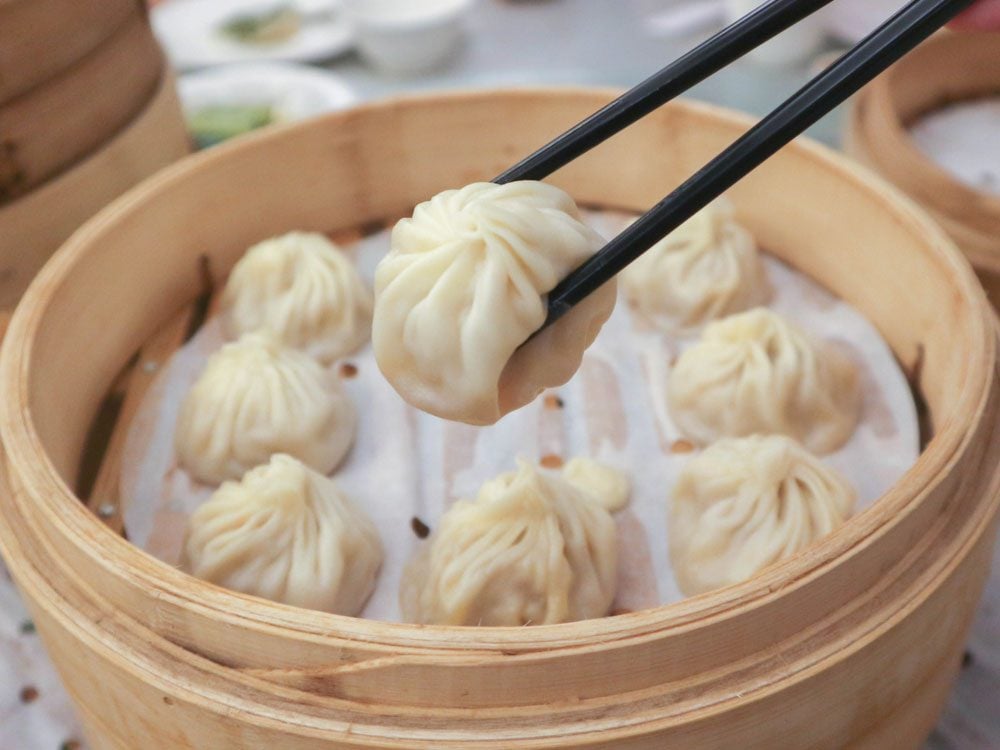
1. Xiaolongbao – Shanghai, China
A staple of China’s dim sum tradition is the steamed bun, an innocuous little ball of dough that contains a burst of flavourful filling. Shanghai’s xiaolongbao, which translates roughly as “little buns in a steaming basket,” are probably the pinnacle of this snack. Traditionally, they are filled with pork and aspic, which is a meat stock gel that melts into broth when heated. As a result, the tiny buns pack a tasty, salty punch. They are found throughout the city, enjoyed standing up at street stalls and restaurant-fronts by Shanghai’s business set and the city’s working class in equal measure.
Here are 13 unusual international customs you never knew existed.
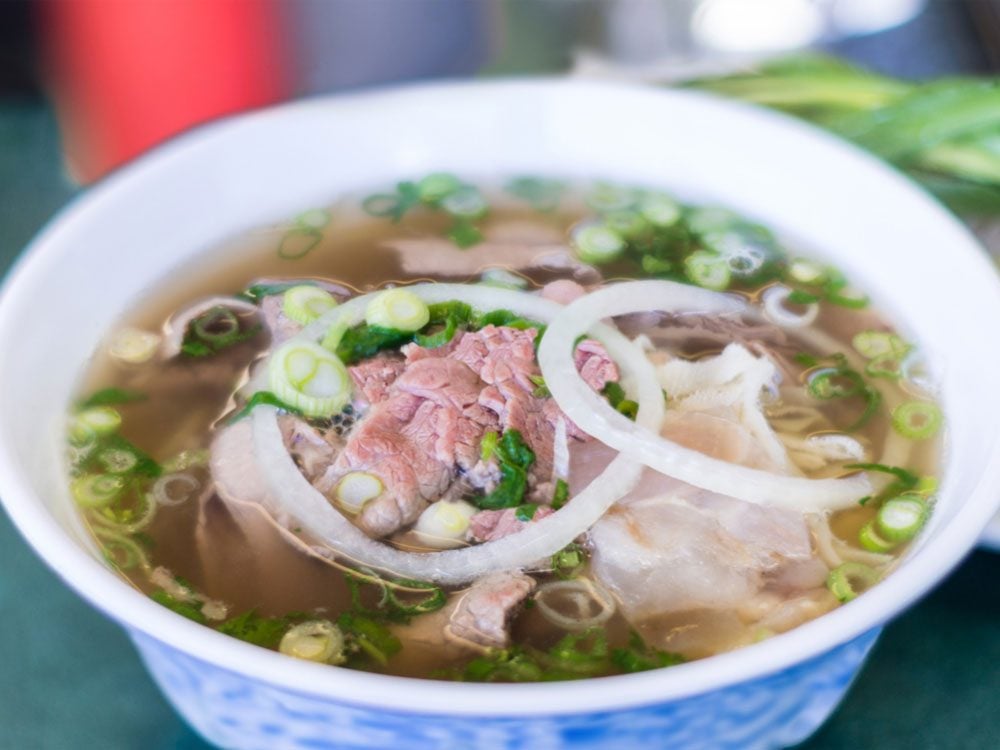
2. Pho – Hanoi, Vietnam
Pho is now a famous Vietnamese export around the world, so one might expect this noodle soup has a long and strong tradition in its country of origin. In fact, it only came to prominence in Vietnam about a century ago. Ingredients in the soup are simple: noodles, meat (chicken or beef), and garnishes (green onion, thai basil, lime and chilis). But what really sets pho apart is its broth, made by simmering bones and tendons with charred onion and ginger, spices and seasonings, ideally for hours on end to get the flavour just right. Hanoians consume the stuff like it’s going out of style.
You need to visit these 10 places in Southeast Asia before you die.
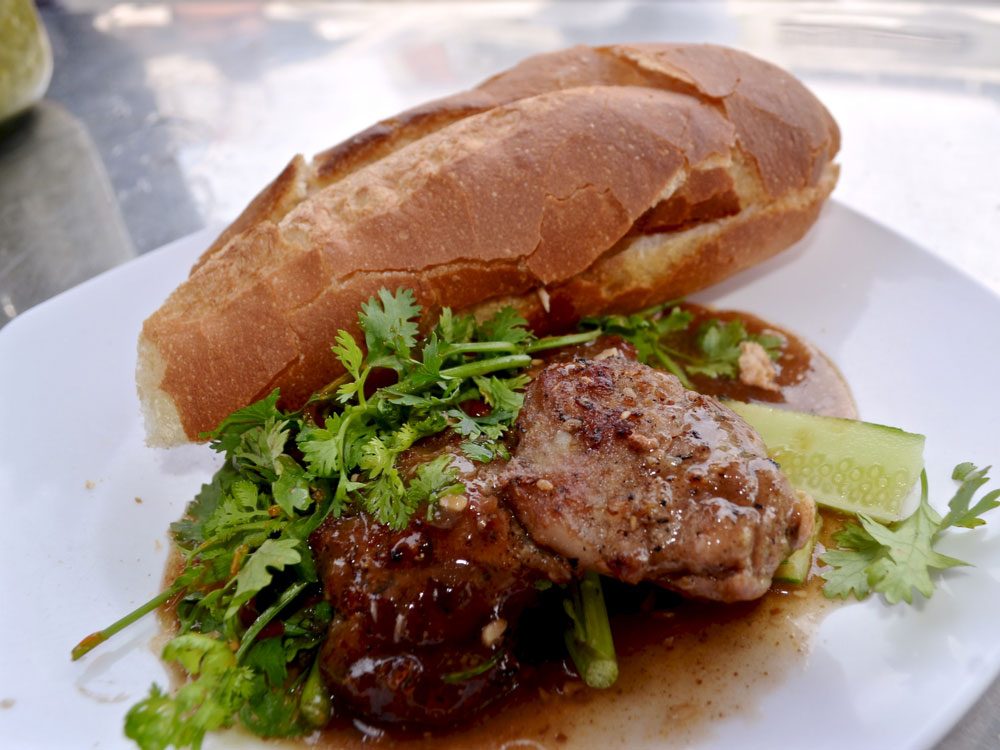
3. Num Pang – Phnom Penh, Cambodia
The French colonists left behind many aspects of their culture after they abandoned Indochina. Probably the only relic that is an inarguably positive addition is their cuisine. The combination of French food and local ingredients created some astounding fusion fare. A great example is Num Pang, which like its Vietnamese cousin banh mi, takes French baguettes, pate and mayonnaise and tosses in local chilis, deli meat and pickled vegetables to create arguably the perfect sandwich. Phnom Penh is the place to nosh on this delicious snack: the baguette is crispy, the pate is chilled and the vegetables are fresh as they come.
Even your jaded teenagers will love these 10 family-friendly vacation destinations.
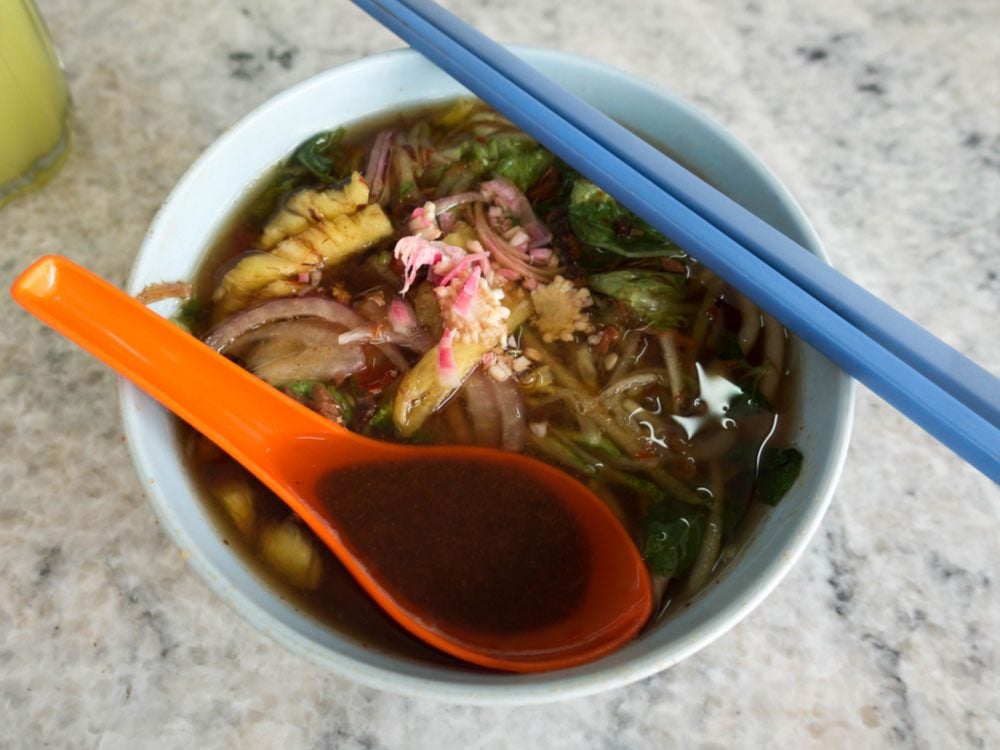
4. Penang Asam Laksa – Penang, Malaysia
Asam laksa is so popularly associated with Penang that it has taken on the name of the Malaysian island in an almost matrimonial fashion. Laksas are spicy noodle soups or curries made with thick rice noodles and Penang asam laksa is a variation on this theme, using sour tamarind and mackerel to conjure up its distinctive flavour. The dish is made more notable with the addition of lemongrass, spicy chilis, sweet pineapple, cilantro, onions and fresh mint garnishes. Penangites have loved their asam laksas for some time and with their loving additions to their favourite recipe, it’s safe to say it’s a strong marriage of geography and food.
Here are the best weight loss tips from all over the world.
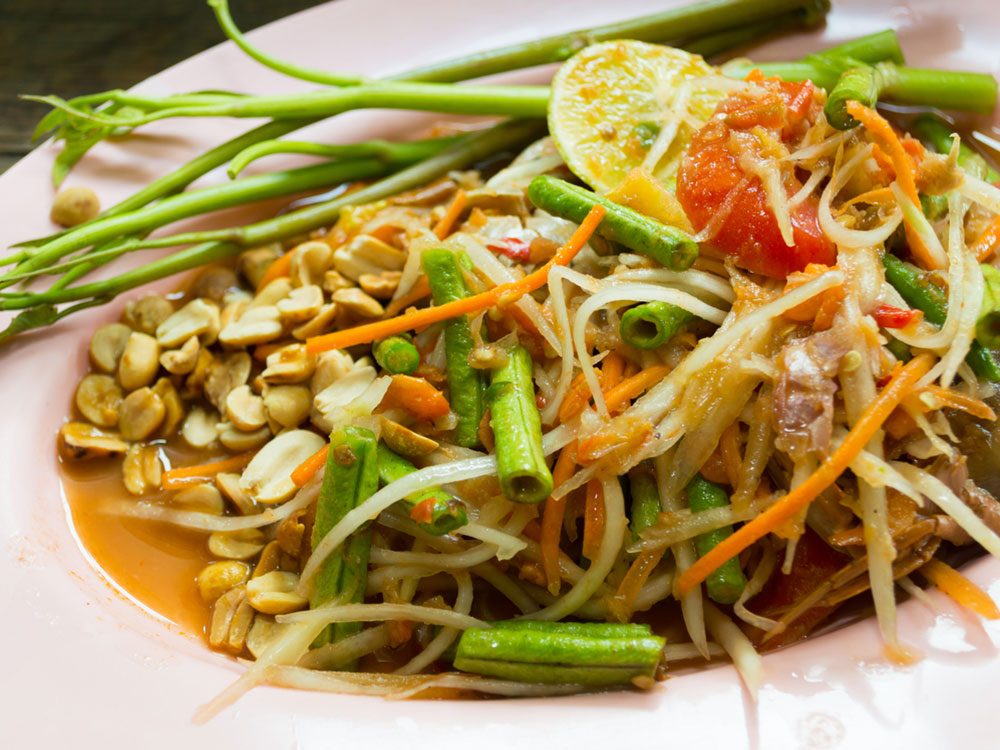
5. Som Tam – Bangkok, Thailand
There are many preparation methods throughout the continent, from stir-frying to boiling, but no other iconic dish besides som tam is prepared with a mortar and pestle. This fruit salad is a mix of unripe julienned papaya and a cornucopia of complementary ingredients: sugar, lime, chilis, fish sauce, garlic, dried shrimp, tomato, among others. When mashed together in the mortar, it produces a dish not sweet like you might expect, but sour, spicy and savoury in equal measure. Local variations add in everything from peanuts to crab, but in Bangkok you’ll find the spiciest versions, which can be as challenging to eat as they are delicious.
Check out Thailand’s 10 most beautiful beaches.
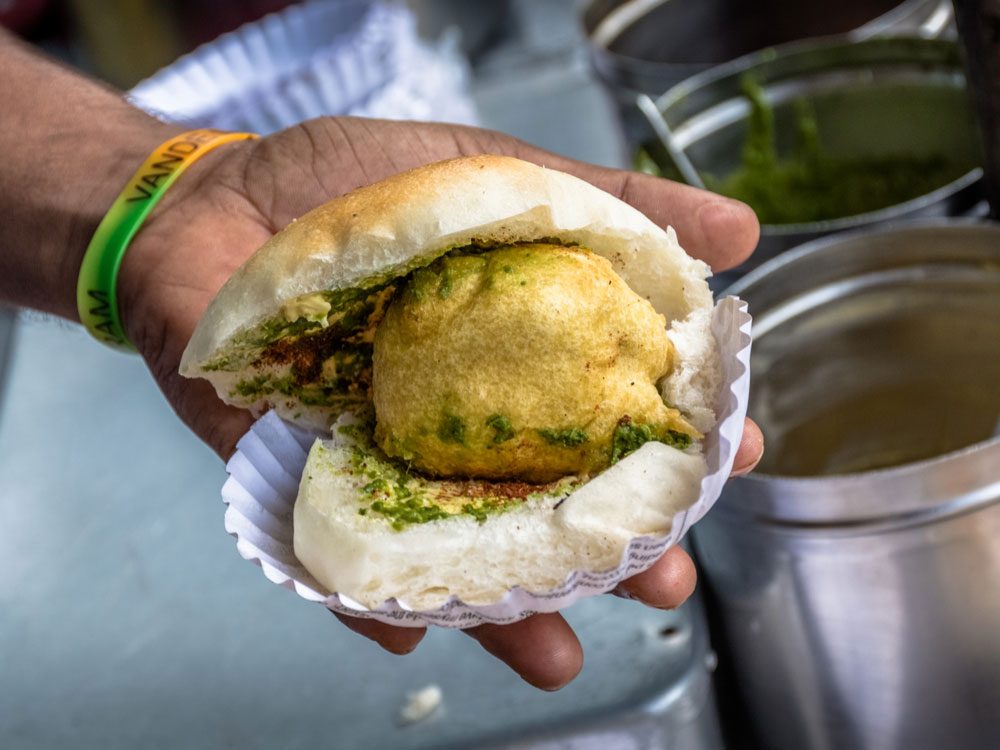
6. Vada Pav – Mumbai, India
India is a culinary powerhouse built on street eats. From chaat to chai, the delicious and varied tastes of of India’s food-wallahs can be found on almost every street and alley in the country—even on the side of the highway. Vada pav, which originates in the state of Maharashtra and which is particularly popular in Mumbai, exemplifies the simple and popular street cuisine of the country. A potato mash is combined with ginger, chilis, garlic, coriander and mustard seed, deep-fried and then served on a buttered white bun with a chutney. It’s India’s answer to the burger—and it is equally delectable.
Travelling to India for the first time? Don’t forget these 19 helpful hints.
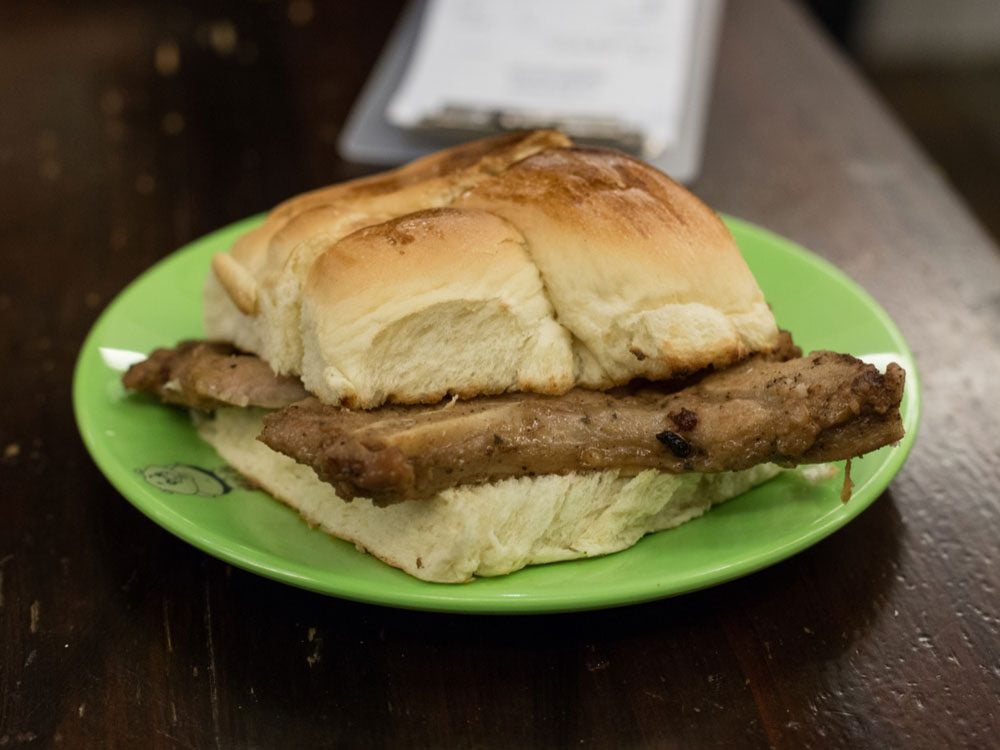
7. Pork Chop Bun – Macau, China
As far as prepared food goes—street or otherwise—it rarely gets much simpler than Macau’s famous pork chop buns. In fact, all of the ingredients are in the name—it actually is simply a pork chop in a bun. No lettuce, no mayo, no ketchup, no pickles. Just a chunk of meat in a piece of bread. Of course when it comes to food, simple is often best, and ingredients can be deceiving. The bun is crunchy on the outside but soft and warm on the inside. And the crux of Macau’s favourite snack is a mouthwatering made-to-order pork chop, salty, juicy and dripping with flavour.
Here are 25 city names around the world you’re mispronouncing.
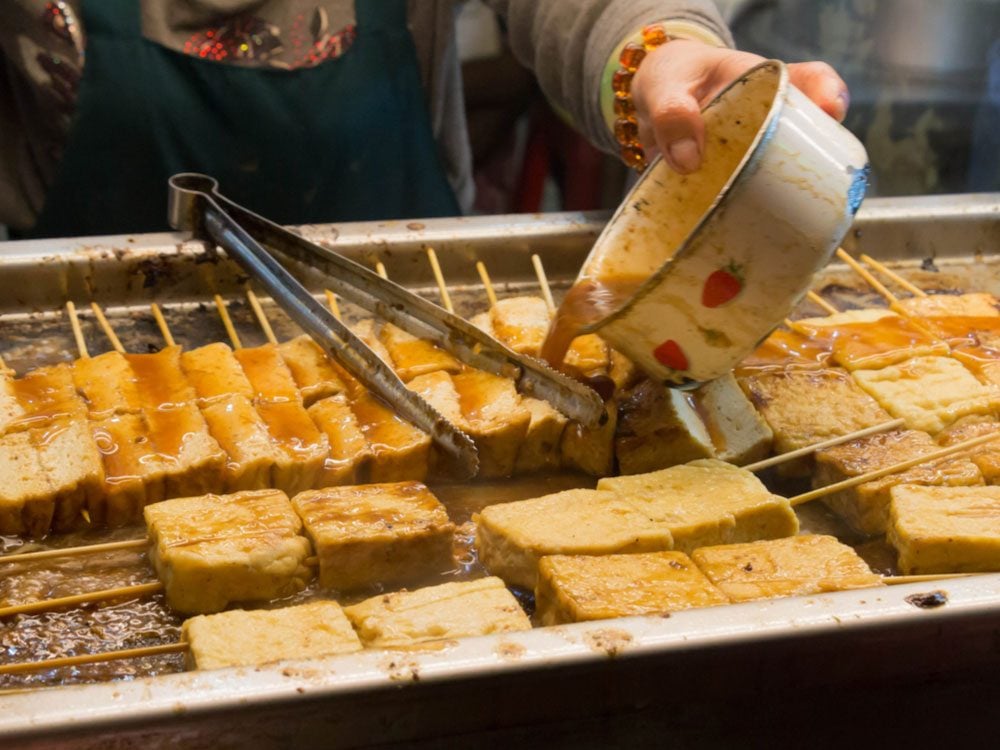
8. Deep-Fried Stinky Tofu – Taipei, Taiwan
The pungent aroma of chou doufu is apparent long before you can see the street cart where it is being cooked. Yes, it smells terrible, but it tastes terrific. Chou doufu is popular throughout China, where regional variations see the dish served spicy or spicier and accompanied by sauces or pickled veggies. In Taipei, where it is massively popular, deep-fried stinky tofu is the favourite variety. And for a newbie, this method of preparation takes away some of the shock of the very strong odour. Once you’ve gotten over the smell, though, it’s easy to get addicted to this night market snack.
Here are eight Chinese New Year celebrations we can all celebrate.
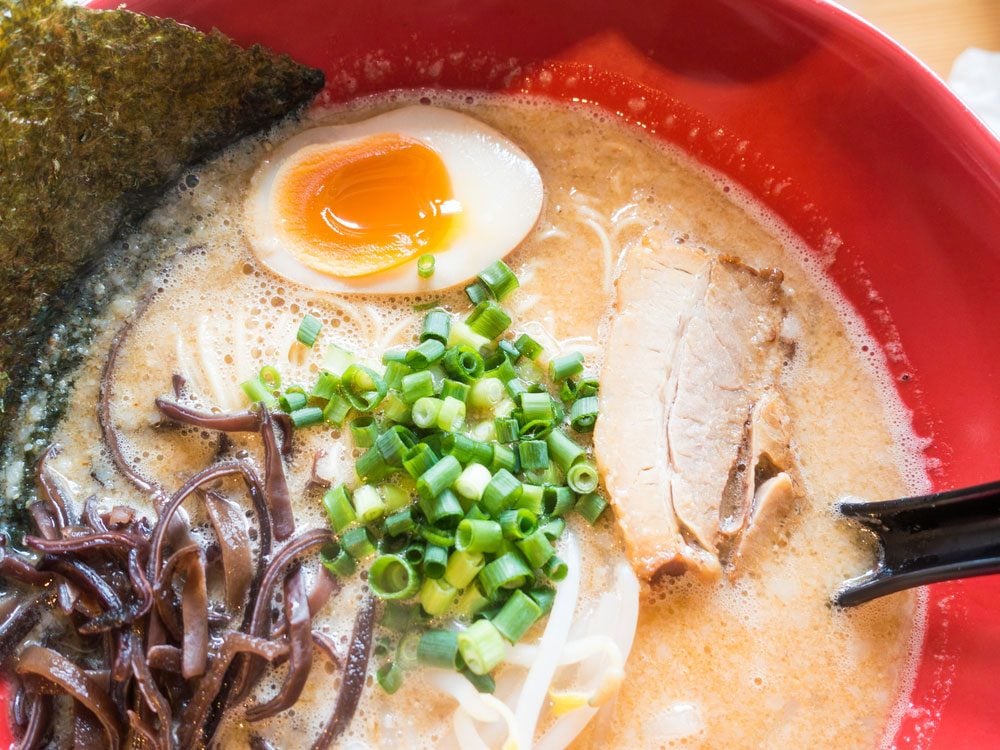
9. Tonkotsu Ramen – Fukuoka, Japan
To the Japanese, ramen, the instant noodle dish best known for keeping North American college students alive, is a lot more than dried noodles in a cardboard cup. Almost every region in Japan has a distinctive form of ramen. None, though, is as rich as tonkotsu ramen, a hearty and heavy variety that hails from the streets of Fukuoka. To achieve its creamy texture, pork bones and fat are boiled together for several hours and the broth is served with pickled ginger, garlic, pork belly and straight, thin wheat-flour noodles. Fukuoka, being Japan’s premier street food city and the home of the tonkotsu, is undoubtedly the best place to sample this famous Japanese dish.
Here are 10 hidden gems you can only see in Japan.
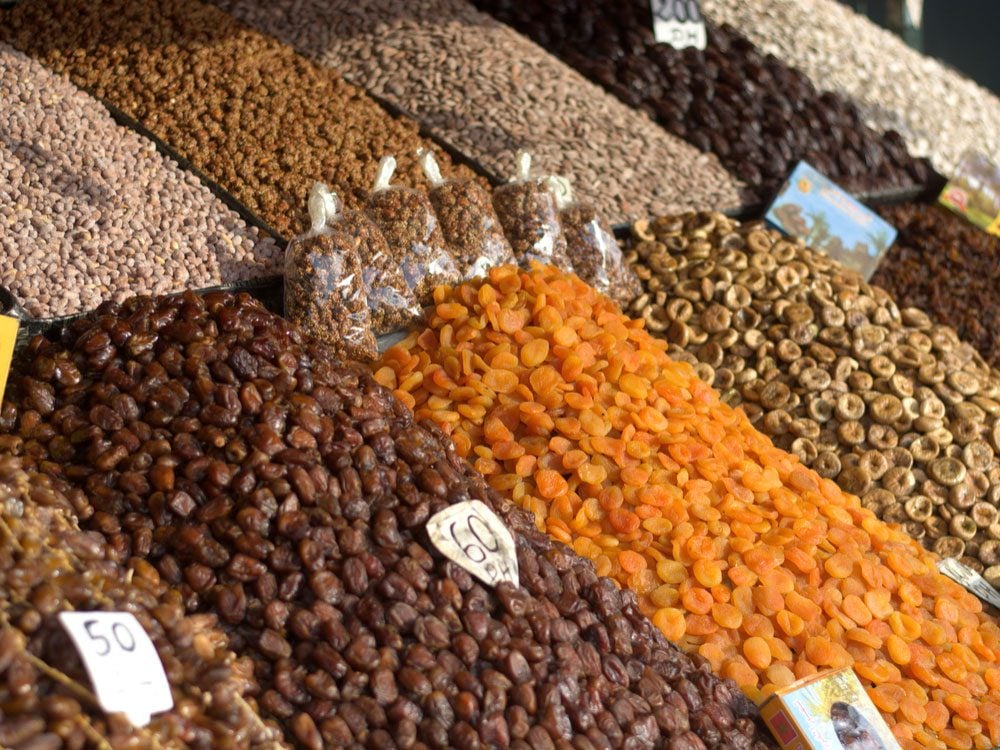
10. Fresh and Dried Fruits – Afghanistan and Northern Pakistan
It may be surprising to learn that some of the best fruits in the world grow naturally in the mountainous regions of these two notorious countries. Apricots, mulberries, grapes, cherries and pomegranates grow in abundance and are extremely flavourful. The dried versions, desiccated with traditional techniques that preserve sweetness and flavour, are sold along with the fresh forms in stalls along the roadside in villages, cities and remote areas in the mountains. Nuts are also plentiful in the region. The fruits, in addition to being delicious, contain nutrients and vitamins that are said to contribute to the legendary long lifespans of the local Hunza people in Pakistan.
We’ve rounded up the top 10 weirdest foods from around the world.